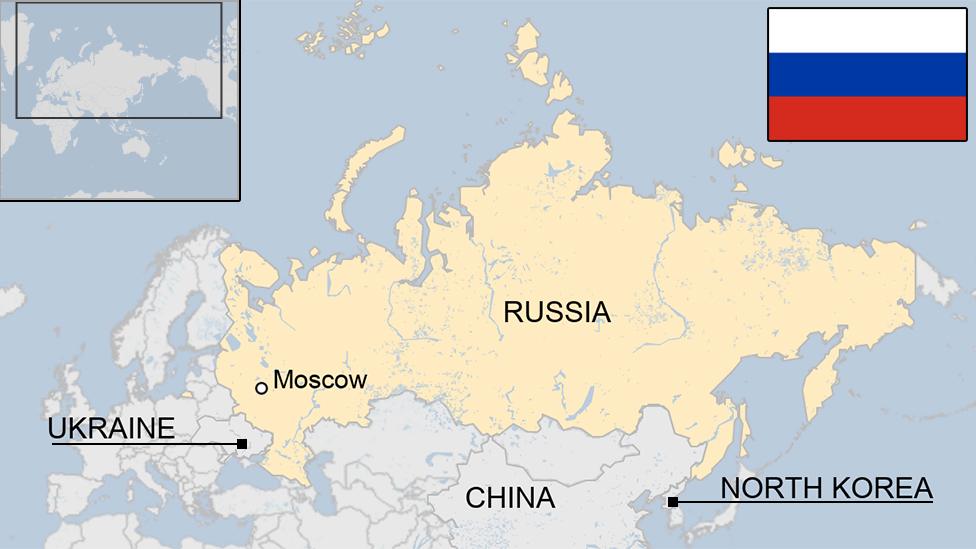Putin's nuclear slideshow echoes Cold War
- Published
President Putin introduced video of a missile launch in 2018
Fact or fantasy? Real world weapons or simply technologies that are under development? A message to the US or largely to his own domestic constituency? President Putin's presentation of Russia's new nuclear arsenal was all these things and more.
Above all it was a signal that there is going to be no thaw in US-Russia relations any time soon. Mr Putin appears largely to have given up on any hopes of a close understanding with the mercurial Donald Trump.
With both Russia and the US talking much more now about modernising their nuclear arsenals, there are alarming echoes of the Cold War years. And the fact that many of these new technologies are being developed at a time when existing arms control regimes are crumbling again gives added cause for concern.
At the outset it should be stated clearly that even with their current arsenals, contained by the terms of the New START, the nuclear arms reduction treaty signed in 2010, both Russia and the US have more than enough nuclear weapons to destroy each other many times over.
Which countries have nuclear weapons?
Russia is obsessed by Washington's deployment of anti-missile defences - which may or may not work as advertised - but no serious western strategic experts believe that Russia's nuclear forces are in any way compromised by current missile defences.
The US insists it has only deployed limited defensive systems to counter the specific threat of long-range missiles from Iran or North Korea.
But countering missile defence seems to be at the heart of Russia's thinking. The Russian view has always been that missile defence may start in a limited way but if the technology is proven, it will inevitably expand.
It remembers the grandiose, though never fulfilled, vision of a missile-proof shield advanced by President Ronald Reagan. And it clearly still smarts from the US decision in 2002 to withdraw unilaterally from the 1972 Anti-Ballistic Missile Treaty which strictly limited such defences.
President Putin's new arsenal of nuclear systems was orientated then around one principle - defeating US anti-missile defences.
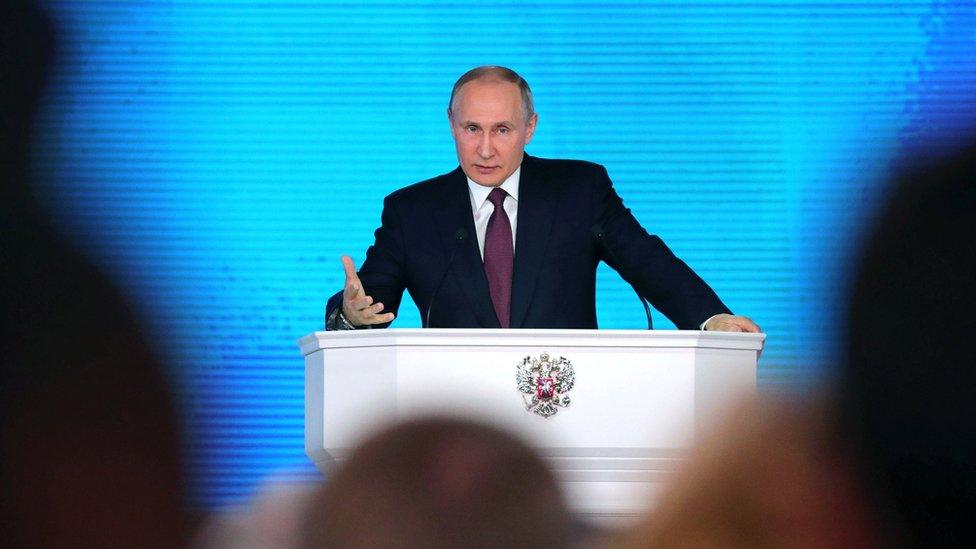
Mr Putin gave his state of the nation address on Thursday
Some systems - including most likely a very long range nuclear-tipped torpedo - avoid missile defences altogether by operating in a totally different environment - the sea - rather than travelling through space.
Others, like the new intercontinental ballistic missile, the nuclear-armed cruise missile or a variety of "hypersonic" systems might simply fly too fast or on trajectories which would make their interception impossible.
Russia is by no means alone in pursuing some of these technologies. Both China and the US are actively exploring the possibilities of hypersonic weapons - described to me by one arms control expert as "a hang-glider on steroids".
They would be launched into space and then glide at extraordinary speeds along the edge of the atmosphere before dipping down to strike their targets.
But the real question about President Putin's speech is: how close are these weapons to becoming a reality? It was instructive that he used video representations to demonstrate their capabilities rather than pictures of real operational systems.
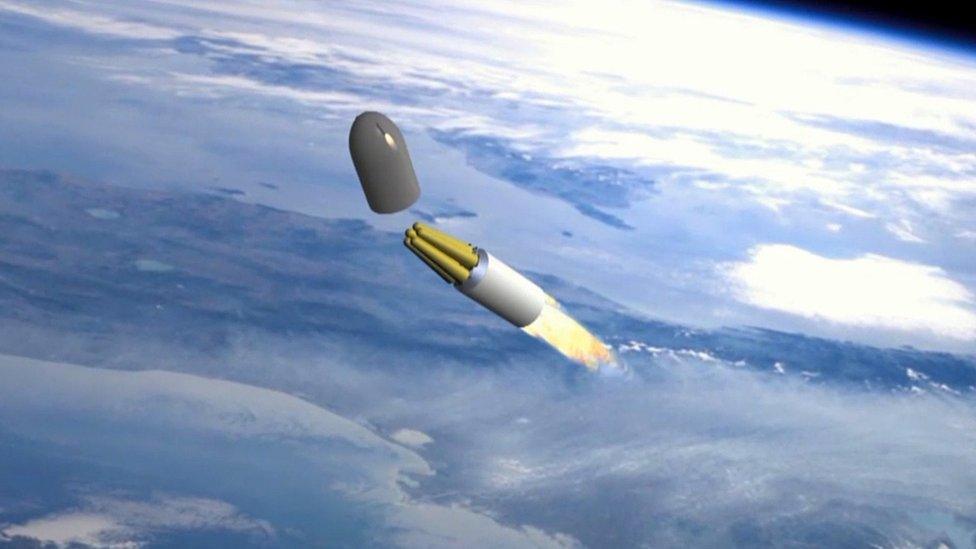
Mr Putin's animation showed a purported new generation of nuclear weapons
Many of the technologies presented by Mr Putin have been known about for some time.
The nuclear-tipped torpedo for instance - what today we would call an unmanned underwater vehicle - is a project that dates back in one form or another to Soviet days.
In the past the US has also looked at the idea of nuclear-powered cruise missiles but they were abandoned in the 1960s because the then available technology simply couldn't handle the task.
What has changed today is that technology has advanced in leaps and bounds. The weapons championed by Mr Putin are no longer technically unfeasible, even if significant practical hurdles still remain.
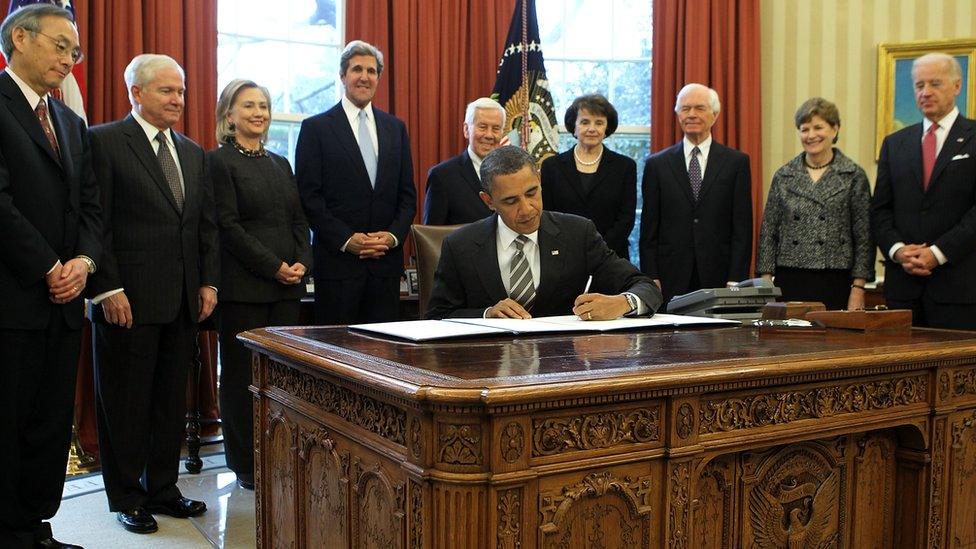
President Obama signed the New START arms reduction treaty in 2011
Russia has made particular progress in the field of cruise missiles and it is Russia's ongoing modernisation plans - and the development of a variety of new technologies - that have in large part driven Washington's own Nuclear Posture Review that was published just a few weeks ago.
So, there is a reality here behind the rhetoric - even if many of the weapons systems outlined by Mr Putin are still very much in the developmental stage.
This modernisation is not new. Russia has been developing these weapons for a very long time. And in the US, it was President Obama who set in motion a major modernisation of the nuclear triad - its air, land and sea-based nuclear systems. This will take years to complete and has largely been adopted by President Trump.
What is new here is the combative and threatening rhetoric - very much a throw-back to the worst of the Cold War years.
Mr Trump has boasted about having a bigger nuclear arsenal than anyone else. Now Mr Putin is doing his own chest-thumping exercise, insisting that Russia has weapons that nobody else can deploy.
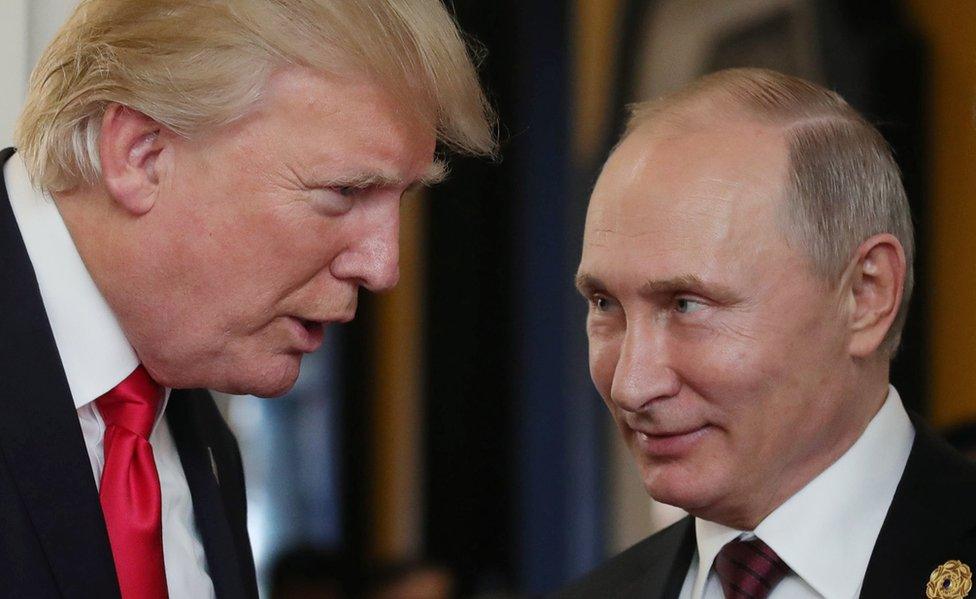
Mr Trump and Mr Putin met in Vietnam last November
For many arms control experts, one clear message emerges from all of this. The two sides should get around the table and begin to talk seriously again about strategic nuclear disarmament.
The existing strategic arms reduction treaty (New START) expires in some three years time. In a conversation early in Mr Trump's presidency, Mr Putin reportedly spoke of Russia's willingness to extend this agreement.
Mr Trump, it is said, turned to his advisers and asked them what this New START thing was all about. When he heard it had been negotiated by Barack Obama, he determined that it must be "a bad deal" and told Mr Putin: "No."
Veteran arms control expert Mark Fitzpatrick says: "New START should be extended beyond its 2021 cut-off date and new measures should be added to head off the dangerous systems that Putin portrayed."
Arms control matters most at times of rising tensions. And in the wake of Mr Putin's presentation, Washington and Moscow clearly have a lot that they could talk about.
- Published1 March 2018

- Published12 February 2018
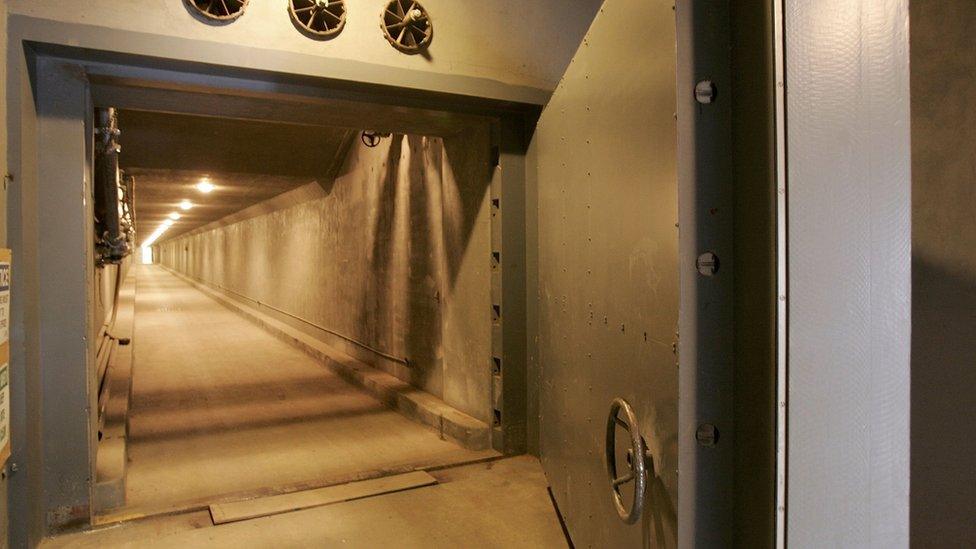
- Published1 March 2018
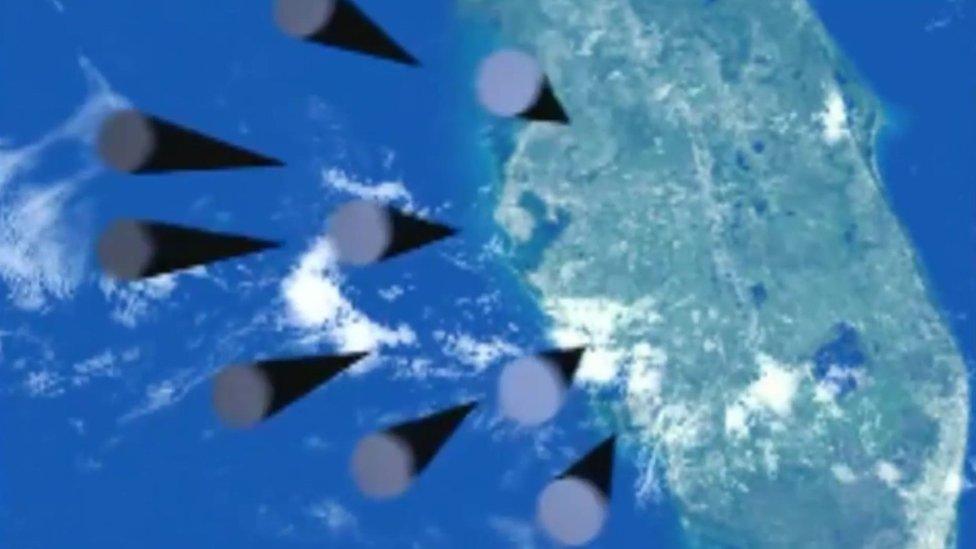
- Published10 August 2017
- Published17 March 2024

- Published18 January 2017
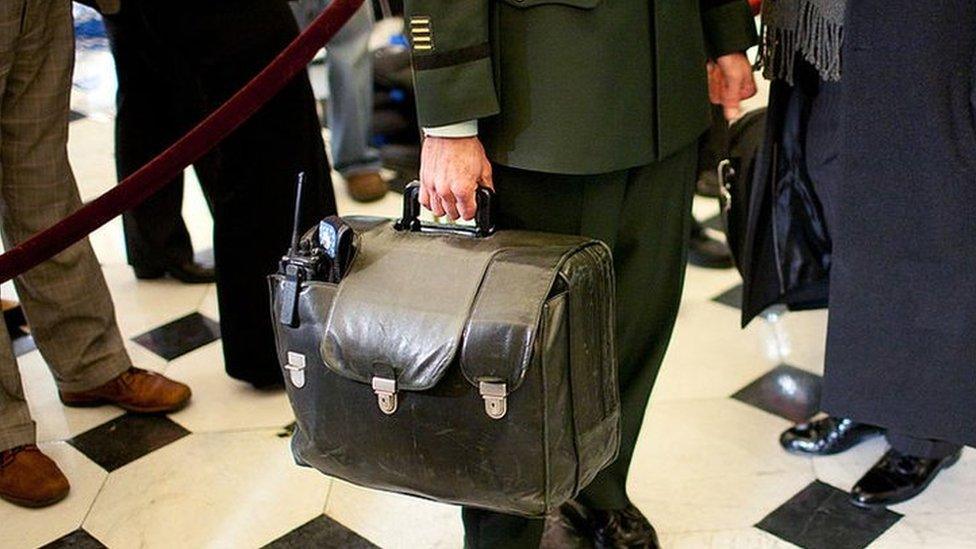
- Published10 December 2015
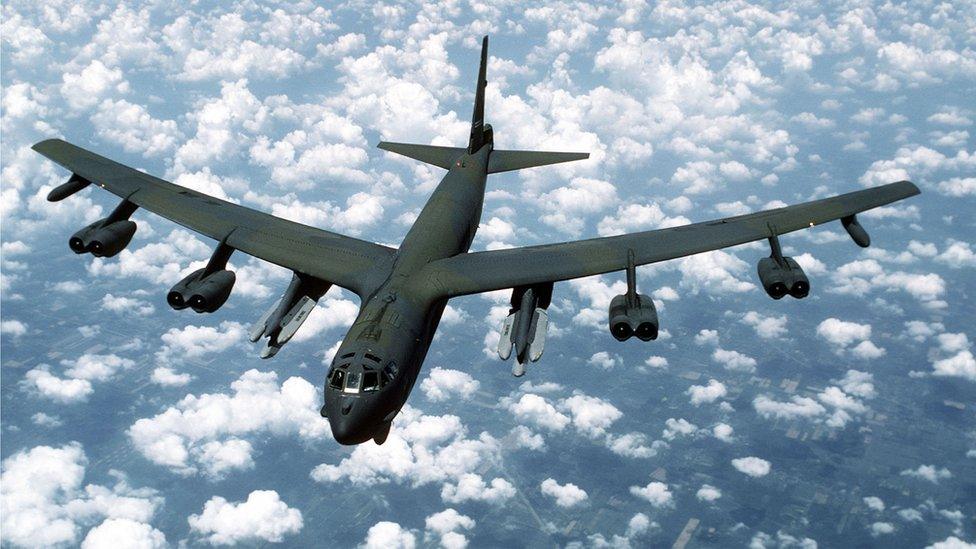
- Published1 March 2018
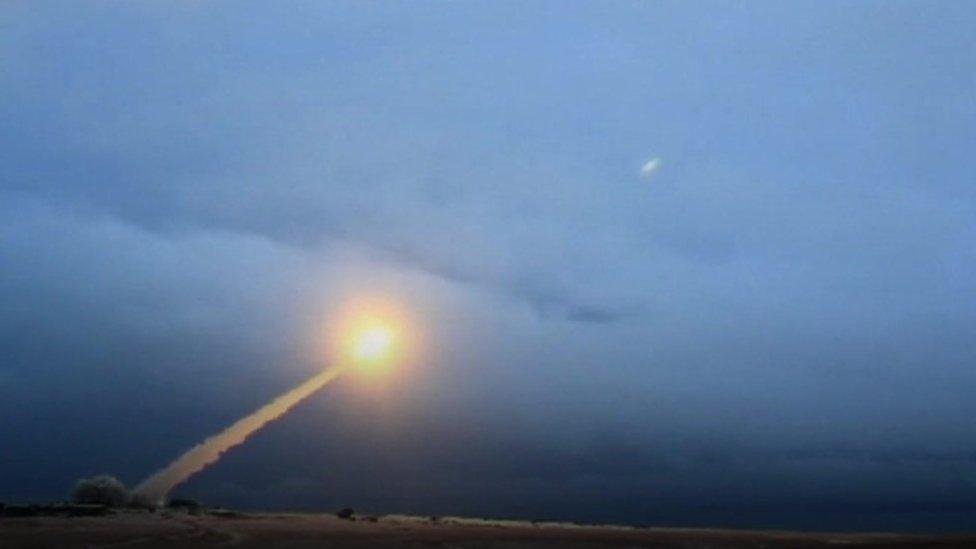
- Published25 March 2024
